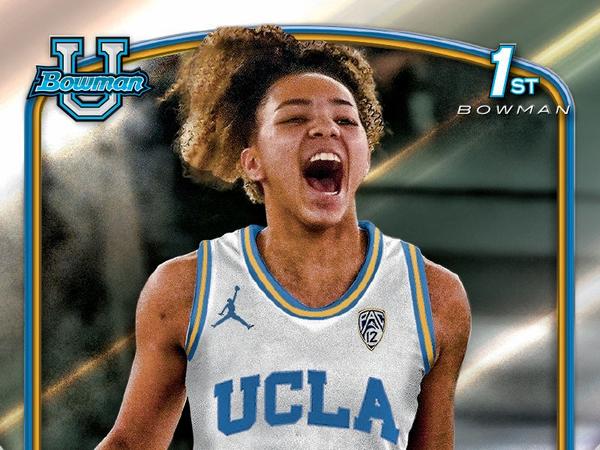👊 Not your grandfather’s cardboard: The new era of sports trading cards and collectibles

The hobby that’s often associated with a bygone era of kids trading on the playground has entered a new era. From the growing diversity of players, teams, and leagues you can collect items from (hi, women’s sports) to the unmatched community among collectors, this isn’t your grandfather’s hobby.
- The industry is projected to be worth $98B (!!!) by 2027 and women’s sports cards are a major part of that boom.
With that, it’s well past time for more women to break into the still male-dominated industry. That’s why we’ve teamed up with Topps for a three-part series detailing everything you need to know before you start (or continue!) collecting.
- For part one, we’ll briefly cover the history of trading cards before diving into some frequently asked questions and key terminology.
The history
Baseball is the sport most often associated with trading cards, and for good reason — the first cards were printed in the 1860s, right around when the sport was first invented.
- Beginning in the 20th century, tobacco and chewing gum companies (including Topps) started including baseball cards with their products.
- Topps was also central to a key evolution in trading cards — in 1952, they released the first true modern baseball set which included player statistics for the first time. The more you know.
With that history of innovation, it’s no wonder Topps continues to change the game in this new era of collecting. Our favorite improvement? The increased availability of women’s sports cards.
- Back in 2020, Topps dropped their first-ever women’s softball card set in partnership with Athletes Unlimited and they also offer UEFA Women’s Champions League sets. Obsessed.
Now that you have the history, let’s take it to the present day. Here are some answers to a few FAQs as well as terms to know as you start building your own collection:
Why should I start collecting?
How much time do you have? *winks* In all seriousness, there are myriad reasons to start your own collection. We love it because it’s a unique and fun way to express your fandom, helps you to learn more about sports and their history, and connects you to the passionate, welcoming collectors community. Plus, the potential future return on investment doesn’t hurt.
What are some of the key card terms I need to know?
Topps offers a handy dandy comprehensive glossary with further details, but we’ll start off with some of the most common terms. The first is “hobby,” which, similar to two-way player, LA Angels superstar Shohei Ohtani, is a dual-threat.
- Hobby is used to refer to both the practice of card collecting and the actual community of card collectors.
As for how cards are sold, a pack is the smallest product you can purchase (other than single cards). These sealed containers typically contain between one and 60 cards. From there, packs are placed into boxes, aka a predetermined number of packs (typically between 1 and 36), sold together in a sealed container.
- Those boxes are then placed into cases, which are, you guessed it, a predetermined number (anywhere between 1 and 18) of boxes sold together. It’s like a Russian nesting doll of collecting fun.
Set: Cards are issued as part of a set, typically in accordance with a year or sports season.
Base cards: Common (aka less rare) cards that make up a product’s main set. These cards are often numbered, making it easy to keep track of how many you have, and what you still need to complete the set.
Parallels: As the name suggests, parallels “run parallel” to base cards. They’re mostly identical, save one distinct visual element. Differences can include coloring, material, image changes, and more. Parallels are typically printed in smaller quantities than base cards, making them rarer.
Insert cards: Think of inserts like the “it girl” of trading cards. They are randomly, well, inserted into sets and feature their own themes, designs, and numberings as opposed to the base and parallel cards.
- Types of insert cards vary greatly — some are autographed, some are memorabilia cards (which contain a piece of equipment used by an athlete in competition), and some simply feature cool designs. It’s the luck of the draw.
How can I get started?
Glad you asked. One of the best ways to begin your collection is by picking up something from a sport or team that’s near and dear to your heart and, thanks to Topps’ wide range of offerings (we’re talking women’s sports, F1, MLS, even pop culture) there’s truly something for everyone. Happy collecting!
Enjoying this article? Want more?

Sign up for The GIST and receive the latest sports news straight to your inbox three times a week.

